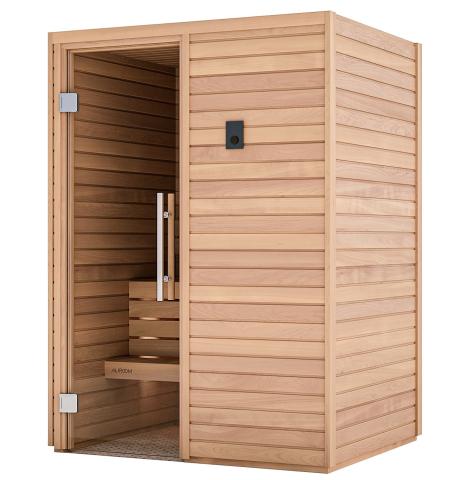Excitement About Traditional Sauna
Excitement About Traditional Sauna
Blog Article
All about Traditional Sauna
Table of ContentsFascination About Traditional SaunaUnknown Facts About Traditional SaunaThe 25-Second Trick For Traditional SaunaTraditional Sauna Fundamentals Explained
Many of the weight shed in a sauna is water loss and is re-gained upon rehydrating. Nevertheless, undoubtedly sauna can be an important component of a healthy fat burning program. To take a look at the differences in between typical and IR saunas, I will certainly separate these into proven, theoretical, and fabricated distinctions.Therefore, the best point in the saunawhich goes to the ceiling directly over the sauna heateris usually between 185 and 190 F. Traditional Sauna. Claims that a standard sauna goes beyond 200 F is simply not real and not appropriate for electric saunas marketed in the US. The temperature level for a far-infrared sauna is normally established between 120 and 140 F; nevertheless, unlike the typical sauna, the objective in and IR area is not to accomplish a heat
As a result of this, the temperature level difference is nearly irrelevant, since extreme sweating leads to both sauna types, but the method of warming the body is various. In an IR sauna the bather will certainly feel hot and will sweat profusely, however at much lower temperature levels. Therefore, if the goal is to spend longer amount of times in the sauna, the IR sauna is a great choice.

The 8-Minute Rule for Traditional Sauna
When the high temperature level is accomplished, the components cycle on and off to preserve the high temperature. Most typical sauna individuals take pleasure in putting water over the rocks to create vapor to raise sauna moisture degrees. The benefits of pouring water over the rocks include: making the area more comfy, moistening the nasal flows, and permitting the usage of aromatherapy by mixing important oils with the water.
In a far-infrared sauna, the warm front permeate the body to effectively heat up the body and raise the body core temperature. To achieve this raised temperature, Far-infrared emitters develop infrared power which is close to the exact same wavelength as that which the body normally emitsoften referred to as the "Essential Range" of 7 to 14 microns), so the energy is well obtained by the body.
When the power gets in the body, it triggers the body temperature to raise and inevitably causes perspiration. In an infrared sauna it is essential for the emitters/heaters to stay on almost frequently. Considering that there is no mass of rocks to maintain warm, the sauna will certainly cool down if the emitters turned off.
As pointed out above, the sauna bather in an infrared room wants to place himself before operating emitters to get maximum gain from the warm. The home heating time for both areas can be really different, depending on exactly how the spaces are utilized. For a traditional sauna, a bather must permit 30-40 minutes for the area to accomplish a preferred temperature level and to correctly pre-heat the rocks.
All About Traditional Sauna
A well built sauna will commonly achieve a temperature of 150-160 F in about 30-40 minutes. For hotter temperature levels, the room may need to heat for you can find out more a longer duration.
To some, 15 minutes was "thrown away" while the infrared energy heated up the wood panels instead of warming a body, while others discover a pre-heated space to be a lot more comfortable and think an elevated starting temperature is necessary to start sweating. The length of advised use for every area is about the very same (10-15 mins per session); nonetheless, because of the reduced air temperature levels and the capacity to really feel the results of infrared heat faster than a typical sauna, it is not unusual for a person to invest a total of 20-30 minutes in an infrared sauna.
Typical saunas tend to be bigger (therefore make use of even more electricity) than infrared saunas, although conventional saunas are definitely available in one and 2 individual sizes. For a two-person traditional sauna, 5x6 or 5x7 dimension is most preferred. The leading bench can comfortably seat 2 or 3 people and is also enough time to relax throughout the sauna session.


The average expense per kWH of electrical power in the U.S. is approximately $0.11, so a 4.5 kW heater will set you back around $.50 to run for one hour, if the heating unit runs constantly for one hour. Normally a sauna heater will compete 75% of the initial hour and 50% of succeeding hours on considering that the elements cycle once the established temperature level is achieved.
Not known Facts About Traditional Sauna
A 2 person far-infrared room is typically physically smaller than a traditional sauna, commonly about 4' browse around here x 4' or smaller. The IR heating system is usually 1.5-1.7 kW Continue using a 120 volt 15 amp plug-in solution. Considering that the room can be utilized earlier than a sauna room, we will presume the space is made use of for to of an hour consisting of warm up time.
There is a hardly ever reviewed difference in the social experience between the two rooms. While our society has lost several of the social benefit of the conventional sauna experience, it can be really socially rewarding. From family time in the sauna, to heart-felt conversations with loved ones, to sauna partiesthe conventional sauna experience can bring about intimate socializing.
A lot of higher end infrared rooms consist of colored light therapy, sound systems and full-glass fronts.
Report this page